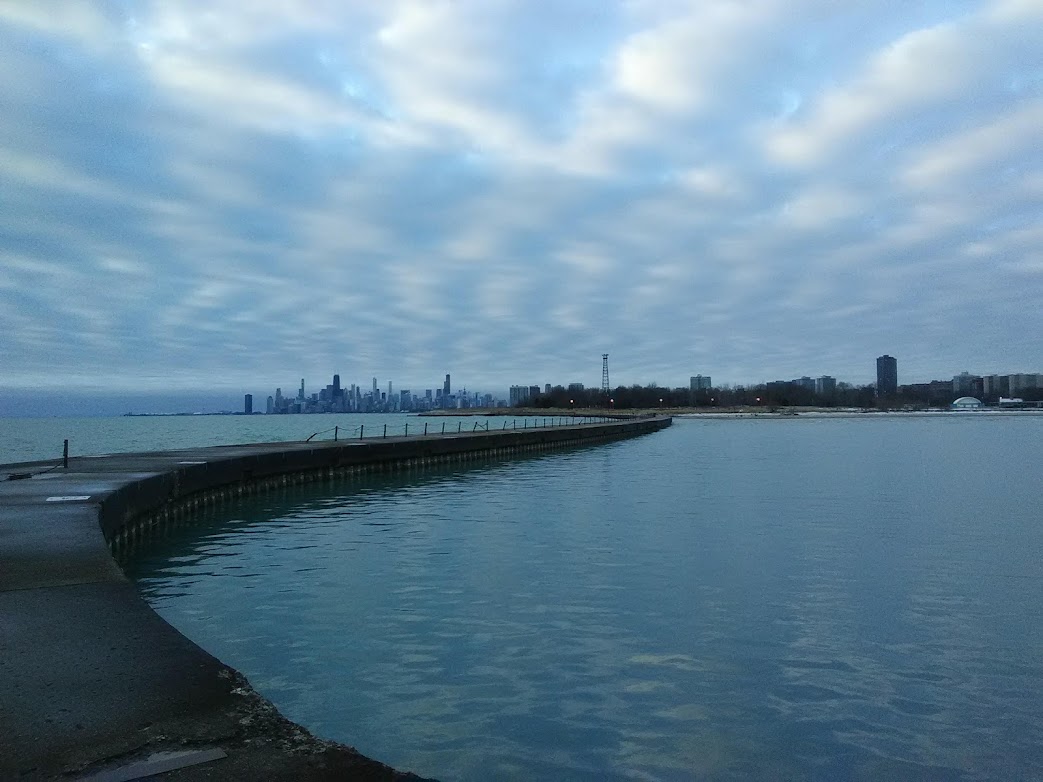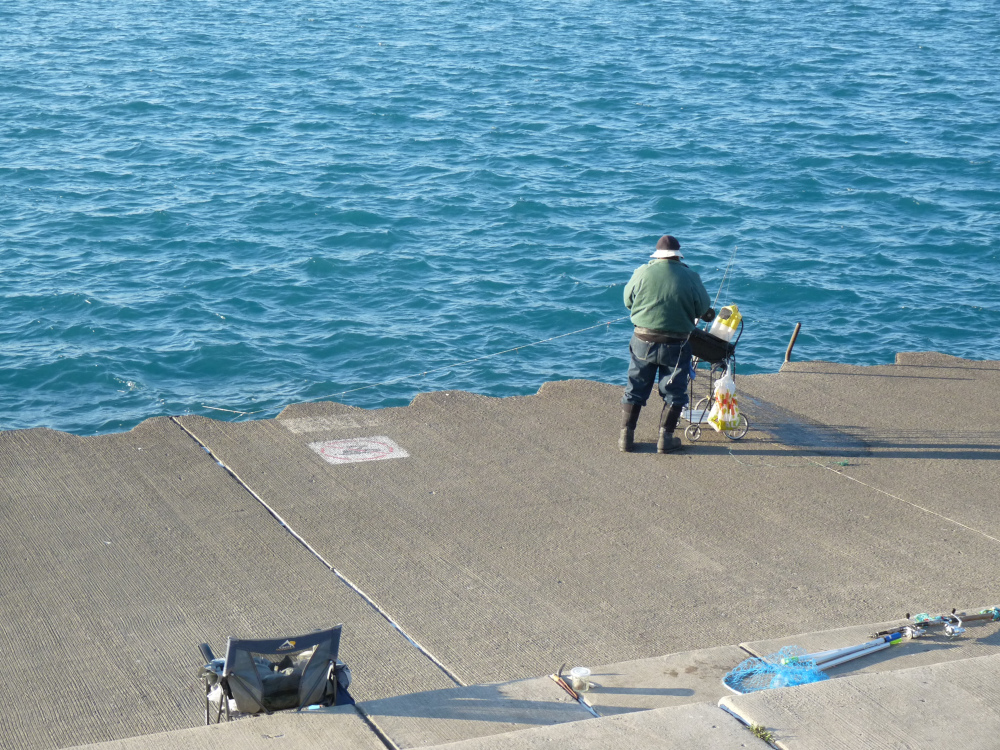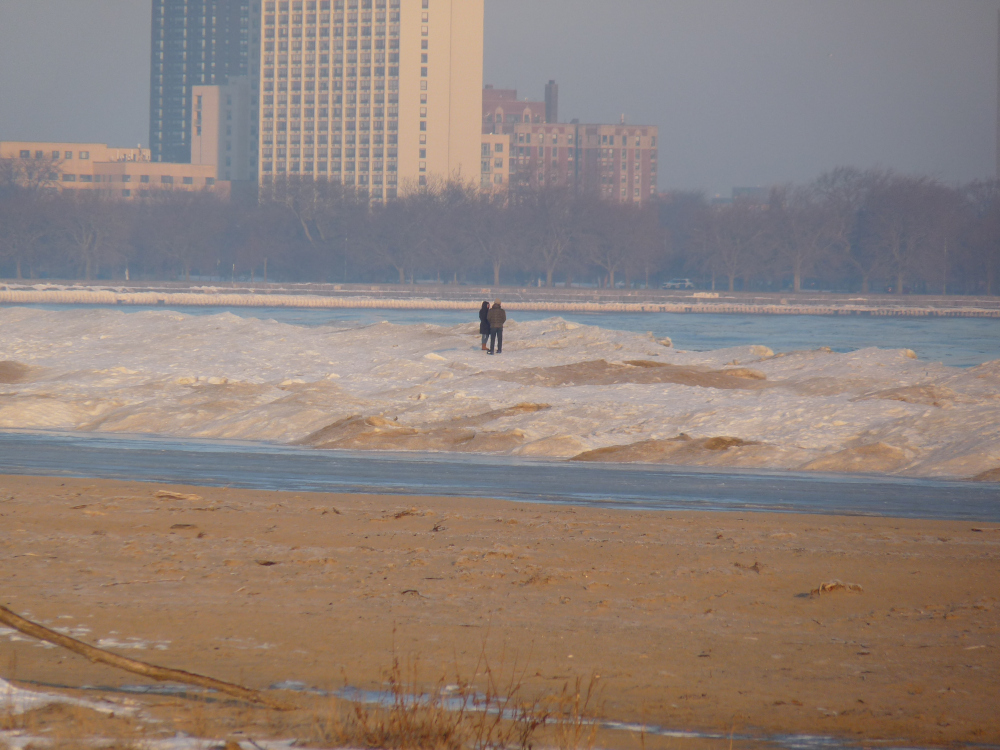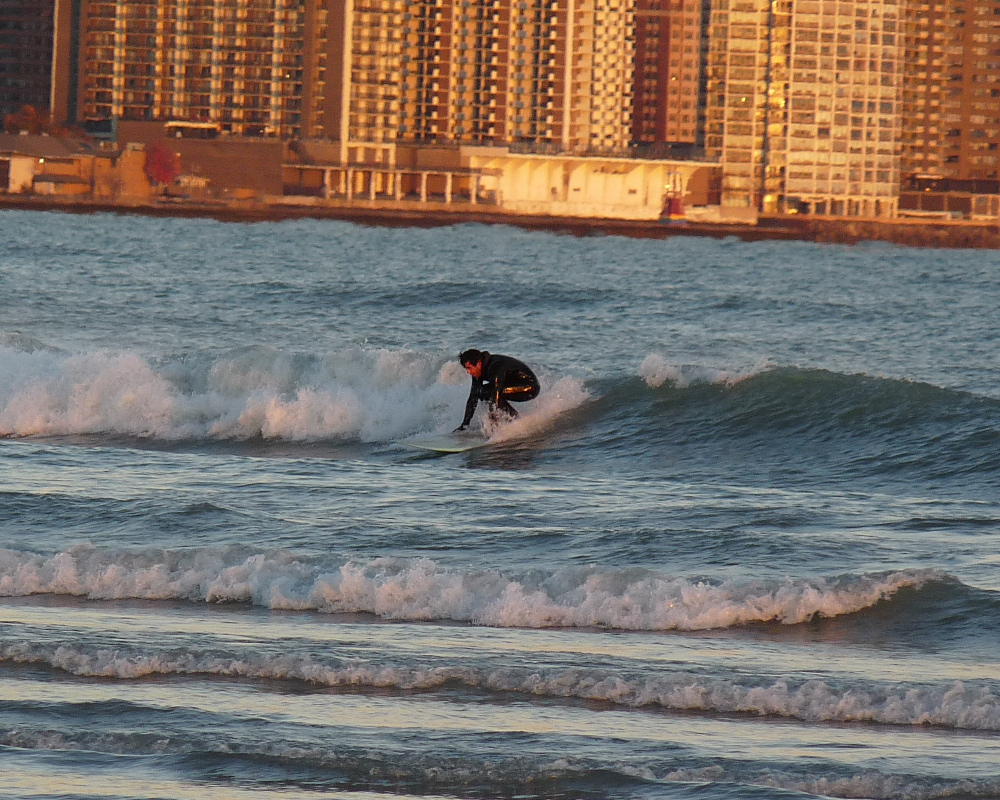One of the most distinctive sounds of spring at Montrose is the firing of fishing lines. Fishermen use fire extinguishers fitted with a pipe to propel their lines out into Lake Michigan. This setup functions like a canon, and the sound it makes is loud enough to startle you if you’re nearby. I’ve also noticed how close some waterbirds come to these fishing lines. I’ve seen Horned Grebes, Red-breasted Mergansers, and a Common Loon on one occasion swim right up to the lines. These birds may have been curious and looking for an easy meal. I can imagine a grebe or merganser getting tangled or grabbing the baited hook, which would be a mess for the fisherman and the bird. A tangled and thrashing Common Loon would be a worst case scenario. Loons are big enough and strong enough to do serious damage to a human trying to free them. They have sharp bills that can draw blood or poke out an eye. My guess is that fishermen would cut the line and lose their bait rather than try to free a struggling bird.
Category Archives: Other Activities
Shelf Ice – Danger
It’s mid winter and shelf ice has formed along the shoreline of Montrose Beach. This is typical. What you need to know is that walking on shelf ice is dangerous. The ice could collapse under your feet, taking you into the frigid water of Lake Michigan, where you’d have a hard time getting out. The two people in the photo walked onto the shelf ice at Montrose Beach on February 6, 2023. They were obviously unaware of the danger they were in.
If you visit Montrose this winter, stay off the shelf ice.
Montrose Point – More Than Just Birds

This view of the Chicago skyline and fishing pier looks like the yellow brick road leading to Oz. (click to see the larger version)
The focus of this blog, and indeed of the other online channels I manage, is birds and birding at Montrose Point in Chicago. I use these channels to promote Montrose as a premier destination for nature study and raise awareness of the importance of the Bird Sanctuary as a safe haven for birds and other wildlife. But there’s more to Montrose than birds. The view of the Chicago skyline is nothing less than breathtaking, especially at sunrise. Walk out to the east end of the Point as far as land will let you, or go out onto the long fishing pier, and look at our downtown. When I do this I’m struck by how much the skyscrapers look like Oz from The Wizard of Oz, shimmering on the horizon in the early mornng light. You will too.
Winter is the slow season for birding at Montrose but Chicago and its skyline are always there, regardless of the season. If you visit Montrose in winter be mindful of the snow and ice and always use good judgement.
Surfing at Montrose – No Sharks, Yes Wetsuits
The focus of this blog is nature at Montrose Point in Chicago, with an emphasis on birds and birding. I write about other areas of interest from time to time, but this is the first post I’ve written about surfing, one of the lesser known and lesser done activities at Montrose. Most surfing happens in fall when storms churn up lake Michigan and produce waves large enough to ride. These waves are never huge, like California or Hawaii, but they are big enough to support a person on a surfboard for a short distance. On November 19, 2021, two intrepid surfers were enjoying the waves at Montrose Beach. The air temperature was in the low 30s. Small consolation was the 50 degree water temperature, definitely requiring a wetsuit. At least they didn’t have to worry about sharks.



